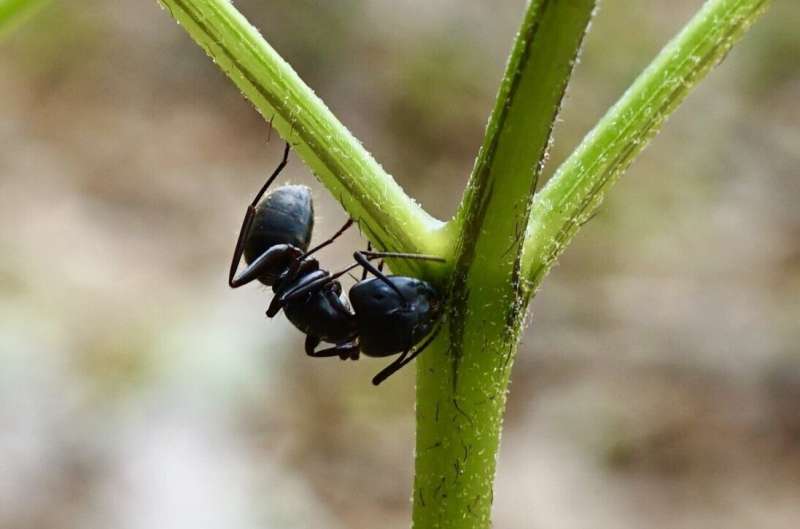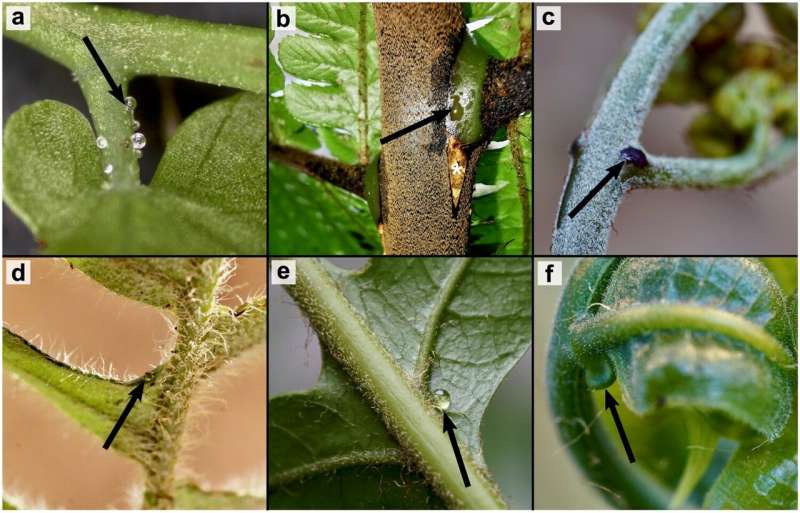
Plants and the animals that eat them have evolved together in fascinating ways, creating a dynamic interplay of survival strategies. Many plants have developed physical and chemical defenses to fend off herbivores. A well-known strategy in flowering plants is to produce nectar to attract “ant bodyguards.” Recent research explores the evolution of this same defense strategy in ferns.
Jacob Suissa, an assistant professor at the University of Tennessee Knoxville, led the study in collaboration with Boyce Thompson Institute’s fern expert, Fay-Wei Li, and Cornell University’s ant expert, Corrie Moreau.
The study, recently published in Nature Communications, revealed that ferns and flowering plants independently evolved nectaries, specialized structures that secrete sugary rewards to attract ant bodyguards, around the same time in the Cretaceous period. This finding is significant as it suggests that similar evolutionary dynamics shaped the development of ant-plant mutualisms across these two divergent lineages, separated by more than 400 million years.
“Our research highlights a fascinating example of convergent evolution, where ferns and flowering plants independently developed similar strategies to defend themselves against predation by recruiting ant defenders with nectaries,” said Suissa.
By integrating phylogenetic data and comparative analyses, the research team discovered that nectaries originated concurrently in ferns and angiosperms, but ferns experienced a significant lag in diversification compared to their flowering plant counterparts. The study also revealed that ferns likely recruited ant defenders secondarily, tapping into pre-existing ant-angiosperm relationships as they transitioned from the forest floor to the canopy.

“The evolutionary history of fern nectaries not only demonstrates the complex relationships between plants and insects—relationships that have been previously underestimated—but also underscores the ability of ferns to adapt to ecological challenges,” explained Suissa.
The research offers new insights into the evolutionary dynamics that shape plant-animal interactions. By understanding how ferns and flowering plants independently developed similar defense mechanisms, scientists can better appreciate the underlying principles governing biodiversity and ecosystem function. This study opens new avenues for exploring the evolutionary history of other plant traits and their ecological impact, reinforcing the importance of mutualistic relationships in the natural world.
More information:
Jacob S. Suissa et al, Convergent evolution of fern nectaries facilitated independent recruitment of ant-bodyguards from flowering plants, Nature Communications (2024). DOI: 10.1038/s41467-024-48646-x
Citation:
Tracing the evolution of ferns’ surprisingly sweet defense strategy (2024, May 30)
retrieved 30 May 2024
from https://phys.org/news/2024-05-evolution-ferns-sweet-defense-strategy.html
This document is subject to copyright. Apart from any fair dealing for the purpose of private study or research, no
part may be reproduced without the written permission. The content is provided for information purposes only.







